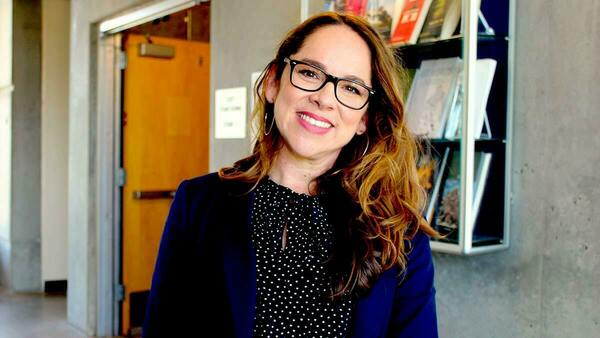
Nicole Woods, a Notre Dame assistant professor of art history, has received the Leonard A. Lauder Visiting Senior Fellowship from the Center for Advanced Study in the Visual Arts, a world-renowned institution that brings scholars to Washington, D.C.
She will spend much of the spring semester in the nation’s capital, working in the archives of the National Gallery of Art as well as the Smithsonian and the Library of Congress.
The fellowship supports research that seeks to heighten understanding of underrepresented areas of art history. Woods will examine the paintings of Bob Thompson, an African American painter from Kentucky who died at age 29 in 1966.
Thompson ran in the social circles of Miles Davis, Ornette Coleman, Jack Kerouac, and Alan Ginsburg, spending late nights surrounded by beat poetry and improvisational jazz in Greenwich Village after World War II.
“They were there because it was cheap,” Woods said. “It’s so weird for me to say now that Greenwich Village was cheap, but young people flocked there after the war. Paris is devastated. London is devastated. Berlin is devastated. New York becomes the new Paris.”
Woods describes Thompson’s art as “acidic” in appearance — entire figures are often painted in several vibrantly monochromatic colors that often bleed into each other.
“His work is about the richness of the human imagination, and the possibility that we need to go inward when we’re so overwhelmed with the external,” she said.
“(Bob Thompson’s) work is about the richness of the human imagination, and the possibility that we need to go inward when we’re so overwhelmed with the external."
While contemporaries like Andy Warhol had already moved onto painting pop art like Campbell’s soup cans, Thompson stayed with his style and acted on inspiration from artistic movements of the early 1900s, such as Fauvism.
“He’s calling on those early 20th-century models, and I’m not quite sure why — other than he’s an art-history enthusiast. He loves work of the Renaissance and Baroque eras so much he finds it relevant to the present,” Woods said. “Everybody else is arguing for a utopian future in which ‘destroy the past’ was a true calling, and he was interested in maintaining a link to the past.”
Thompson also explored religious imagery, an aspect that Woods will examine through the lens of the apocalyptic anxiety of the time.
“It’s about living in the nuclear age. The atomic threat was real. There were two bombs dropped in 1945. The Cold War was not an abstraction; it was a reality,” Woods said. “I think he was responding to this uneasiness in a post-World War II moment of nuclear annihilation.”
This is Woods’ second fellowship in support of her research on Thompson, following a 2019 Arts Writers Grant from The Andy Warhol Foundation for the Visual Arts. In 2018, she won a grant from the Graham Foundation for Advanced Studies in the Arts to complete her book on American artist Alison Knowles.
Woods’ research during her fellowship could yield a journal article, a chapter in a book about artists in the 1950s-60s, or a book about Thompson. Whatever form it takes, it will be a vivid stroll through history.
“Returning to history over and over and over again to ask ourselves the big questions about life, about love, about death, about creative expression and community can tell us a lot about ourselves in the present,” Woods said.
“What does art mean to us? What does connection mean to us? Being in a museum or being outside on anywhere from 42nd Street to South Bend Avenue — the history is always alive. It’s always ripe for us to return to and ideally make ourselves more thoughtful, more in tune with culture and more in tune with what humans do: We make things. We make things around each other.”
“Being in a museum or being outside on anywhere from 42nd Street to South Bend Avenue — the history is always alive. It’s always ripe for us to return to and ideally make ourselves more thoughtful, more in tune with culture and more in tune with what humans do: We make things. We make things around each other.”
Originally published by at al.nd.edu on October 06, 2021.